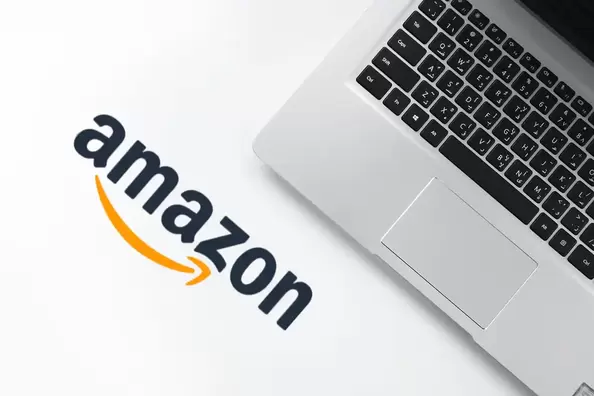|
KDP are one of the biggest print on demand services currently available to self-publishing authors, as part of Amazon they have access to a truly massive market place, and have made the process getting your book published incredibly easy (without any upfront fees either), these are big reasons why so many authors use them to publish with.
So, when it comes to designing a book cover for your paperback with KDP, what should you be aware of and how easy is it? Well, there are two aspects to take into consideration, the first is the technical side of your book cover and the second is the creative part. Both are important and both we’ll cover in this article. First, let’s look at the creative aspect of your book cover design.
0 Comments
Finishing a manuscript is one of the most rewarding achievements for any writer, but once you are at this stage, what’s next? You may have spent many weeks, months and even years in composing your book, but that was only the beginning, getting it published and successfully published that is, can be a daunting challenge for anyone, even if this isn’t your first time.
So, here are nine steps that you should consider once you’ve typed ‘The End’ on your manuscript: One - Editing and Revision: Before submitting the manuscript to publishers (traditional or self-publishing upload), it is essential to edit and revise it thoroughly. This includes checking for grammar and spelling errors, refining the plot and characters, and ensuring the overall coherence and flow of the story. If you want to do this yourself, put the book down and give it a couple of weeks before you review it, getting some distance can help you to look at it again with fresh eyes, and there are plenty of software options to help you do this. But it must be said, getting a professional to edit your book is a far better option and usually leads to better results in polishing your book. Do you want creative ideas for your book? You can start by looking at the latest trends in the publishing industry.
Publishing consultant Ruediger Wischenbart reported that global trends have popped up in the industry, such as the rise of interest in e-books and audiobooks. The publishing consultant also noted that readers are shifting from traditionally popular genres like romance and mysteries to children’s stories, young adult titles, and even nonfiction books. The consultant notes that this shift may be due to the changes in the digital marketing strategies of publishers and authors themselves. So, if you want your book to attract the attention of publishers and readers, here are some trends that you need to watch out for: For most self-publishing authors, print on demand is the obvious choice for getting your book in print, and there is an abundance of services to choose from too. Of course, you have the big names like KDP publishing and IngramSpark, but another company called The Book Patch offers this service and could be an option for your book.
So, who are ‘The Book Patch’? They are a US based print on demand company founded in 2009 by the bestselling author Victor Ostrovsky, they print and sell both eBooks and hardcopies of books too, like other POD services, when a book is ordered, it is then freshly printed and sent out to the customer. What is metadata and where do I find it on Amazon?
The metadata for your book is the basic information which will help readers to find it, it includes the title, subtitle, series info, book description, keywords, cover image, ISBN, contributors, and publisher. It may seem simple, but it is really worth taking your time on getting these elements set up correctly, when done right, it will help you in reaching your audience. When you’re publishing your book with KDP, these details are what you will input upon the first page of the upload process, again, the information that you place here will have an impact on how easy your book is to find, so let’s look at each element section by section. A channel that is very often overlooked for publishing your eBook is the Google Play Book store, being a part of Google and its Android operating system (which is used by over 3 billion people worldwide) it is another place where you should consider having a copy of your book.
So, if you want to get your title on Google’s Play Books, where do you start? Apple books can get overlooked by some self-publishing authors, which when you consider the huge customer base that Apple has, may be a mistake. So, what is Apple’s iBooks and how do you get your own book published through them?
Apple Books iBooks was launched back in early 2010 and upon their iPad, with the version for their cell phones coming out later the same year, since then Apple rebranded it to just Apple Books in 2019. In this time Apple have amassed millions of titles for their store along with a huge selection of audio books too. Self-publishing a book via print on demand companies used to be limited with regards to your choice of book, paperbacks and eBooks were the main choice and only a few of the companies offered hardbacks (and even then, in limited sizes and options).
But now more and more services are offering hardbacks to their customers, KDP publishing being one of the latest to offer this service to its authors, and it seems to have been taken up quickly too. So, if you want to publish your book as a hardback (case wrap or dustjacket), what are your options? Self-publishing a book can be a rewarding endeavor, you finally get to see your work in print and put a great deal of time and effort into getting it out to an audience, so when it does begin to sell and readers start to purchase your book, what royalties will you get?
Well, this will of course depend upon the channel you’ve used to sell your book, and for the majority of self-publishing authors, these channels are the likes of Amazon’s KDP, IngramSpark, Smashwords, Lulu, Barnes & Nobel and Draft2Digital. So, let’s look at how much you can expect to get back in royalties from your book sales from each of these popular POD services. Royalties for your book with KDP
Publishing a book can be an exciting and highly creative process, one which most authors feel compelled to follow, dedicating many hours of hard work and effort into every page. But aside from the creative reasons why authors write books, they still want to get paid for every copy sold. So, if you have published your book with KDP (or are about to) what royalties do they offer and what should you be aware of? Well, KDP splits the categories for print and eBook, offering different options for both, let's take a look at both of these starting with eBooks. |
JD&JCategories
All
Archives
July 2024
All information within this website (including its blog) is published in good faith and for general information purposes only. JD&J Design LLC does not make any warranties about the reliability and accuracy of this information. Any action you take upon the information in this website is strictly at your own risk. JD&J Design LLC is not liable for any losses and/or damages in connection with the use of this site and information.
|













